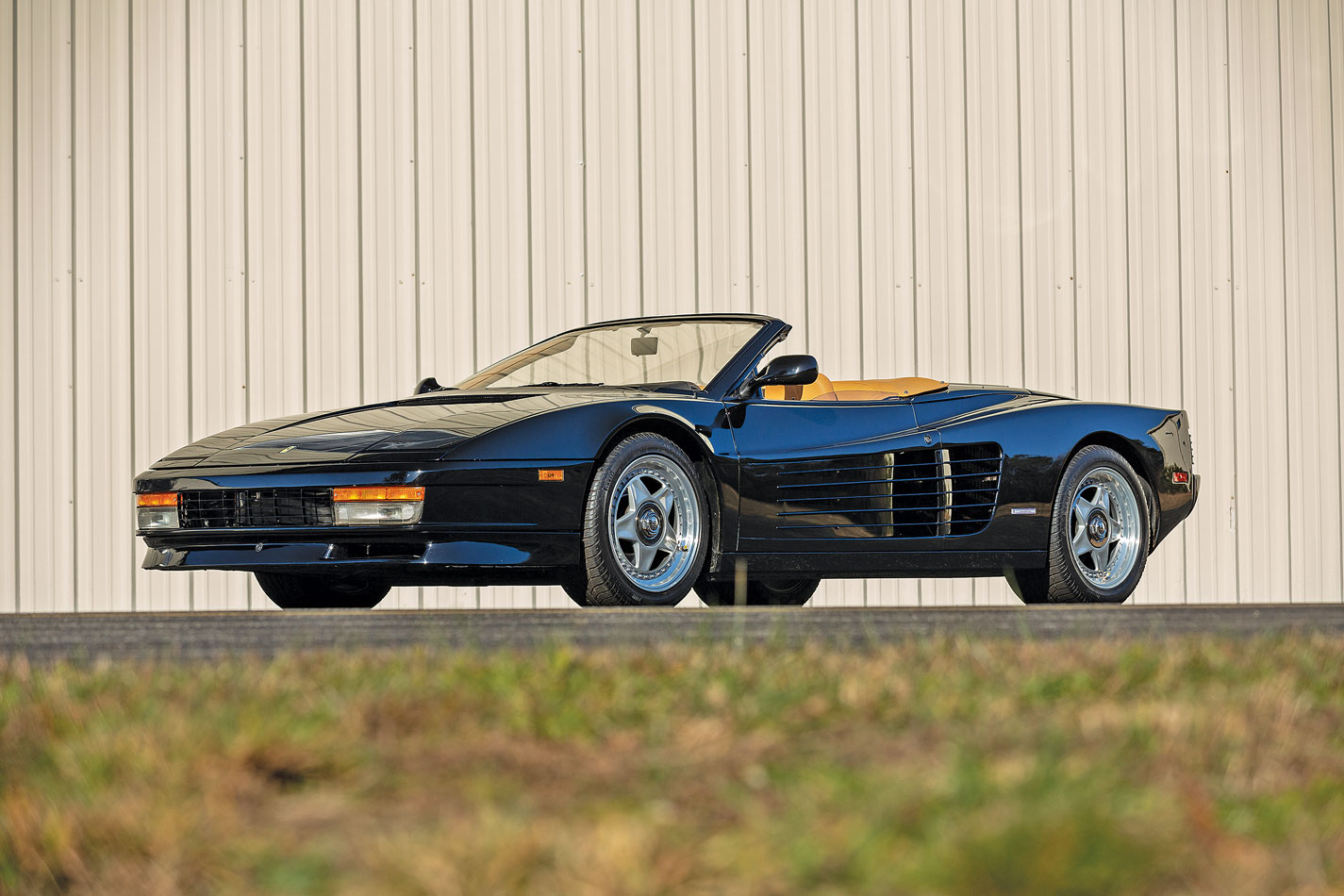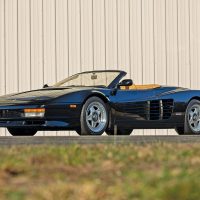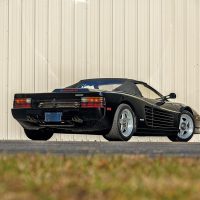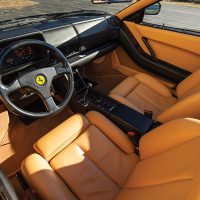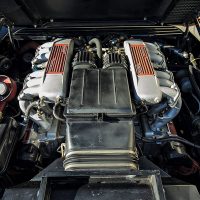SCM Analysis
Detailing
| Vehicle: | 1987 Ferrari Testarossa Spider |
| Years Produced: | 1985–91 |
| Number Produced: | 12 Straman conversions |
| Chassis Number Location: | In door jamb and over the steering wheel |
| Engine Number Location: | Top of engine block, just right of center, close to bellhousing |
| Club Info: | Ferrari Club of America |
| Website: | http://www.ferrariclubofamerica.org |
| Alternatives: | 2000–01 Ferrari 550 Barchetta, 1970–71 Mercedes-Benz 280SE 3.5 cabriolet conversion, 1983 Rolls-Royce R. Straman Silver Spirit conversion |
| Investment Grade: | C |
This car, Lot 159, sold for $168,000, including buyer’s premium, at RM Sotheby’s Arizona Auction on January 22, 2021.
“Rare” and “investment” may be the two most abused words in the collector-car world. Certainly, they have their place in the community, but both need to be quantified to be useful.
For instance, even though the total 1967 Corvette production was nearly 14,500 examples, a Corvette collector may consider a 427/435-hp model rare, with just over 3,000 built. For most other collector cars, however, such a quantity would be far from rare.
All cars require capital to purchase, but that does not make them an investment. Most depreciate to salvage value, and few others will ever be worth more than their purchase price. One place the term is appropriate is when buying a 12-cylinder, open-top Ferrari. Buying one requires a major capital commitment, and the value will fluctuate like an airline stock. One may be a good investment or a bad investment, with timing being the determining factor.
Counting convertibles
Open-top 1950s and 1960s Ferrari race cars are rare in that there are very few of them, but they are not uncommon within the genre. Open-top cars were popular in many racing series, and Ferraris were the cars competitors wanted to drive. A high percentage of early Ferrari race cars were thus open-top models.
Open-top 12-cylinder Ferrari production cars are truly rare when judged against almost any standard. A quick survey indicates just over 2,500 open-top examples have been built since the Ferrari brand was founded in 1947, an average well below 50 per year. The largest production of any one model does not exceed 600 examples, and more than half of the models count under 200 open-top examples.
Ferraris models are generally introduced as a coupe, with a convertible version later offered. The two versions normally look similar, as in a Daytona and a Daytona Spyder, but can also look substantially different, as in the 275 GTB and 275 GTS. The popularity of convertibles and the scarcity of 12-cylinder examples have positioned them among the most valuable Ferraris. All vintage examples and most of the modern ones are in the $1 million-plus club.
Cutting coupes
The quest to have an open 12-cylinder experience at a more affordable price has led a few enthusiasts to convert coupes into convertibles. In an unusual twist, the quest has also led to convertible conversions of models that were never offered in an open-top form.
The late 1970s marked the beginning of the golden age of Ferrari convertible conversions. It may have been a body shop’s suggestion or an owner’s request, but one of them figured out a Daytona coupe could be bought and converted into a nearly exact copy of a Daytona Spyder for far less than the cost of a real one. The July/August 1979 edition of Cavallino magazine covered the subject with an article about the conversion of a coupe. The ethics of doing a conversion were questioned, while dodging a meaningful answer.
Richard Straman’s R. Straman Classic Automobile Restoration and Mike Sheehan’s European Automobile Restoration ran ads as early as 1979 soliciting conversion projects. Straman’s ad noted it also performed 275 GTB conversions and would entertain select projects.
Once the genie was out of the bottle, shops around the world jumped on the bandwagon. Over 100 Daytona coupes lost their tops before the fad was over. Along with Daytonas, we have seen conversions of a 365 GTC/4, at least one 330 GTC, a couple of 400s, a couple of 456s, a 308 and a handful of Testarossas.
What never was
Testarossas were not designed with a convertible model in mind. Besides issues caused by the removal of a major structural member, there was an engine in the space where a retracted top would normally be stored. Then there was the need to shape the soft top to mimic the lines of the elongated hard top. Building a production model was not in the cards.
Yet in February 1986, Fiat head Gianni Agnelli commissioned Pininfarina to build him a one-off Testarossa Spider. Not long after, Cavallino magazine reported that a shop in California had built a targa-top Testarossa conversion. Convertible Testarossa conversions were soon on the drawing board of specialty shops, if not already on the road. R. Straman was responsible for eventually building 12 examples. Koenig in Germany built a few more, as did a couple other shops.
Our subject Testarossa Spider was converted by Straman, known for meticulous attention to both structural integrity and OEM-quality cosmetics. Comparing the Straman conversion to Pininfarina’s, Straman’s top shape is much more attractive and stores more neatly. The black top on our subject car also looks much better than the white top on the Agnelli car.
Running the numbers
Putting a value on any Ferrari oddity is never easy. Daytona Spyder conversions sell for about the same price as an average Daytona coupe. The number is probably depressed by the ample number produced. Where the Daytona conversions are simulations of the originals, the Testarossa Spiders are unique models. They are fast, attractive and skirt the stigma of being an imitation. I suspect fewer than 30 Testarossa Spiders were built, making them relatively rare. Historically, they have sold at a premium to a coupe.
This car showed 51,000 miles, high mileage for any Testarossa. Its pre-sale estimate was a rather wide $125,000–$175,000, indicating RM Sotheby’s anticipated resistance to the mileage. The hammer went down at $150,000, right in the middle of the estimate, with buyer’s commission adding $18,000 and bringing the total to $168,000.
The buyer paid up for a less-than-pristine example, but with few built, choices are limited. Sometimes it is better to have a lesser car now than a better one later. The buyer has wind in their hair today while the underbidder may have to wait years for another example to pop up. ♦
(Introductory description courtesy of RM Sotheby’s.)
